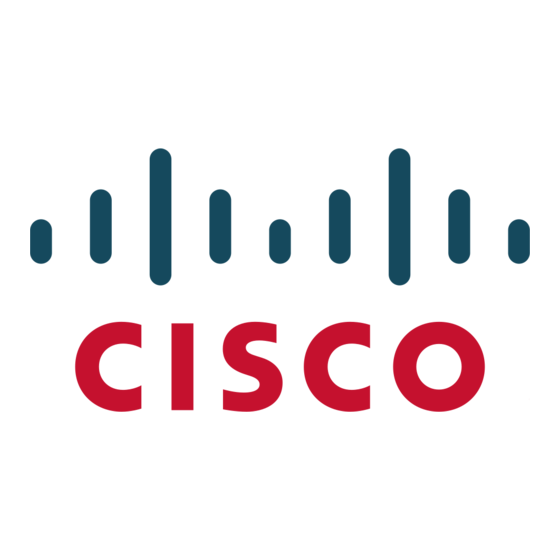Cisco 7246 - uBR Router Налаштування - Сторінка 4
Переглянути онлайн або завантажити pdf Налаштування для Мережеве обладнання Cisco 7246 - uBR Router. Cisco 7246 - uBR Router 28 сторінок. 7200 series port adapter hardware configuration guidelines
Також для Cisco 7246 - uBR Router: Посібник користувача (7 сторінок), Додатковий посібник (42 сторінок)

List of Terms
•
Providing a universal platform for deployment of both current and future modem technologies
via modular upgrades while protecting the operator's invested capital.
•
Leveraging Cisco's industry-standard routing hardware and Cisco IOS software to deliver
advanced network services and applications. The Cisco uBR7246 uses the same port adapters as
the Cisco 7500 and Cisco 7200 series routers, and they are fully interchangeable. This
adaptability and flexibility allows the operator to configure the network with any interface
desired, including Ethernet, Fast Ethernet, FDDI, ATM, packet-over-SONET, and serial.
The Cisco uBR7246 cable modem cards are fully compatible with the Data Over Cable System
Interface Specification (DOCSIS) established by major North American cable operators through the
Multimedia Cable Network System (MCNS) consortium.
The Cisco uBR7246 supports both two-way and telephone return modems on a single downstream
channel. The Cisco uBR7246 therefore allows both one-way and two-cable plants to provide cable
modem service, and gives cable operators the flexibility to roll out service in systems that are only
partially upgraded to two-way.
List of Terms
Community Antenna Television (CATV)—Broadband transmission facility.
Downstream—Frequency multiplexed band in a CATV channel that distributes signals from
headend to users. In this instance, downstream refers to the data flow from the Cisco MC11 modem
card in a Cisco uBR7246 to the user's cable modem.
Headend—Originating point of a signal in a Cable TV system.
IF—Intermediate frequency. Intermediate electromagnetic frequencies generated by a
superheterodyne radio receiver.
HFC—Hybrid fiber coaxial cable. Distribution cabling concept using both fiber optic and coaxial
cable. Fiber is used for the backbone distribution medium, terminating in a remote unit where
optoelectrical conversion takes place. The signal is then passed as data to coaxial cables that carry it
to its destination.
QAM—Quadarture amplitude modulation. Modulation technique that allows data-encoded symbols
to be represented in 16 or 32 different states.
QPSK—Quaternary phase shift keying. Compression technique used in modems and wireless
networks, allowing the transmission of 2 bits per symbol. QPSK provides a 2:1 compression ratio,
resulting in double efficiency for the circuit being used.
RF—Radio frequency. Group of electromagnetic energy whose wavelengths are between the audio
and light range, usually between 500 KHz and 300 GHz.
Symbol—Phase range of a sine wave.
Upstream—Frequency multiplexed band in a CATV channel that distributes signals from
transmitting stations to headend. In this instance, upstream refers to the data flow from a cable
modem to the Cisco MC11 modem card in a Cisco uBR7246.
VC-136
Voice, Video, and Home Applications Configuration Guide
